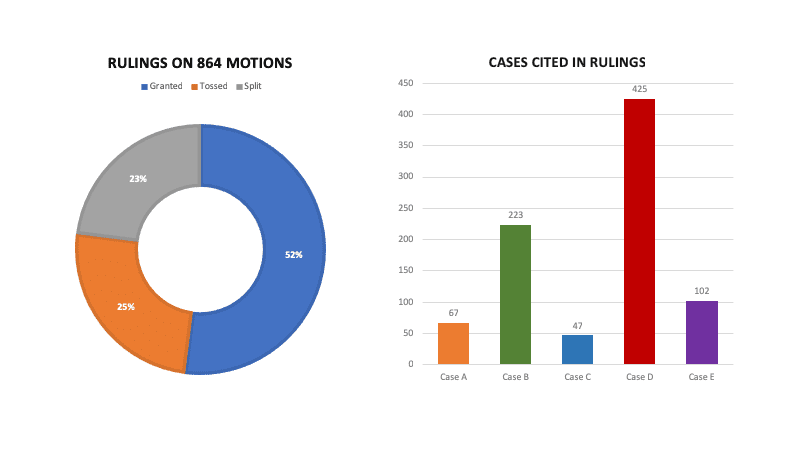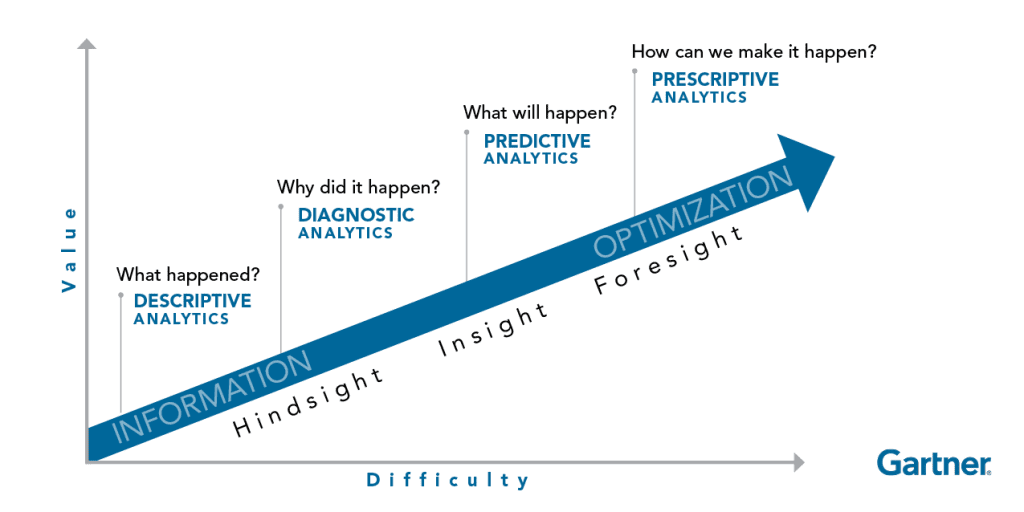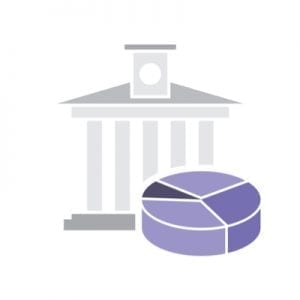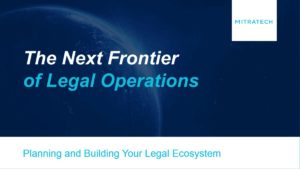Litigation Analytics: From Hindsight to Foresight in Legal 2.0
It may be a belated change, but it’s very real: The legal profession and Legal Operations teams are working toward Legal 2.0, and the benefits delivered by litigation analytics are compelling ingredients in that transformation.
Until lately, attorneys had to answer important questions about litigation based mainly on their own knowledge and hard-earned experience: Should we litigate this case? Where do we file? Do we need to seek a settlement? How much is it going to cost our client?
With the advent of data-driven software and analytics platforms, the answers to those questions can be illuminated via litigation analytics, as our Brian McGovern demonstrated to the corporate legal and Legal Ops community in a recent webinar that included the material below. Today, case strategy and tactics can be informed by hard data and the insights it can deliver when properly analyzed – insights that weren’t possible only a few years ago.
The degree of risk and odds for/against a successful outcome are now more visible than ever, and they’ll be even more visible as litigation analytics tools become further sophisticated. Eventually, we’ll reach the point when artificial intelligence will even be able to advise human legal minds on the best course of action to take on any given case.
Creating a courtroom advantage
Here’s only one example of how litigation analytics helps an attorney improve how they manage a case: By helping them do extensive preparation about a presiding judge.
 Let’s say our attorney is considering filing a motion to dismiss – or must argue against such a motion – in front of an actual U.S. District Judge who has ruled on 864 motions to dismiss in his career. The case he cited the most in his decisions – 425 times – is a U.S. Supreme Court ruling affecting plaintiffs.
Let’s say our attorney is considering filing a motion to dismiss – or must argue against such a motion – in front of an actual U.S. District Judge who has ruled on 864 motions to dismiss in his career. The case he cited the most in his decisions – 425 times – is a U.S. Supreme Court ruling affecting plaintiffs.
That’s an invaluable insight for our lawyer, but it only scrapes the surface of what litigation analytics can already accomplish. What’s in store as this technology matures may be even more transformative.
Moving from hindsight to foresight
The laborious keyword search is being replaced by AI-driven software and technology making it possible for lawyers to easily access and analyze mountainous amounts of data. Then they’re able to mine that data – again, quickly and easily – for relevant insights they can use for strategic advantage.
The different tiers of litigation analytics fall on an evolutionary curve, according to this classification by Gartner, with four levels:
- Descriptive analytics readily deliver data for attorneys at a single mouseclick, using historical information to determine “what” happened – the baseline in how most attorneys use data analytics.
- Diagnostic analytics, according to Gartner, “examines data or content to answer the question ‘Why did it happen?’, and is characterized by techniques such as drill-down, data discovery, data mining and correlations.”
- Predictive analytics combine machine learning AI with predictive modeling, intelligent algorithms, and large volumes of descriptive data to make predictions about future events.
- Prescriptive analytics suggest a specific direction to follow based on outcomes from cases and fact patterns – “what should be done?”
 What’s the most exciting aspect of this evolution? How will let legal departments and law firms use data to move from just having 20/20 hindsight through mining insight into gaining more reliable foresight. That’s hinted at in the chart above, and we’ve begun to see emerging platforms capable of leveraging AI to give lawyers a better sense of whether they should litigate or settle a case. Or even give them an unprecedented crystal ball for predicting and preventing litigation before it happens.
What’s the most exciting aspect of this evolution? How will let legal departments and law firms use data to move from just having 20/20 hindsight through mining insight into gaining more reliable foresight. That’s hinted at in the chart above, and we’ve begun to see emerging platforms capable of leveraging AI to give lawyers a better sense of whether they should litigate or settle a case. Or even give them an unprecedented crystal ball for predicting and preventing litigation before it happens.
The upcoming impacts of litigation analytics?
The effects of increasingly smart and simpler-to-use litigation analytics are going to be felt at nearly every level of case law:
 There’ll be an increased acceptance of the use of data and analytics by lawyers and courts alike.
There’ll be an increased acceptance of the use of data and analytics by lawyers and courts alike.- It’ll drive a further transformation in the way e-discovery is conducted.
- Greater use of pleading-generation platforms and solutions that pre-select the most compelling case law and arguments based on the fact-set, presiding judge, opposing counsel, and other factors.
- Judges may rule more consistently, as they apply analytics in their own work or are influenced by how it’s used in the courtroom.
- Courts will become more efficient as cases are likely to be settled earlier.
- Frivolous litigation may be reduced.
- Predictive modeling will make litigation financing available to many more potential plaintiffs.
In fact, it may soon be unthinkable – and even a breach of ethics – to not statistically model your judge, potential counsel, expert witnesses, and the arguments and case law you want to present, in pursuit of giving your client the best possible counsel. There’s at least one judge who thinks that way when it comes to AI.
It’s one of the ethical questions that will need to be resolved as technologies like litigation analytics become more central to the legal business.




